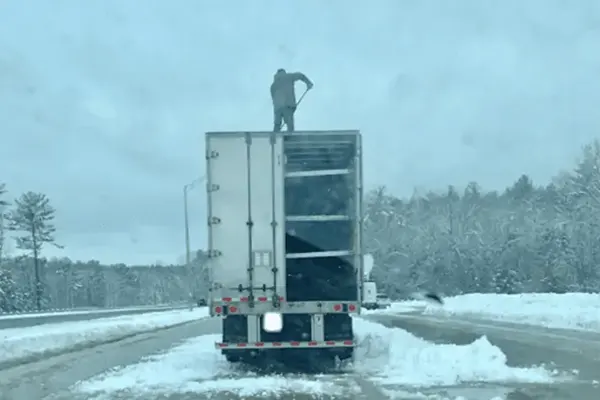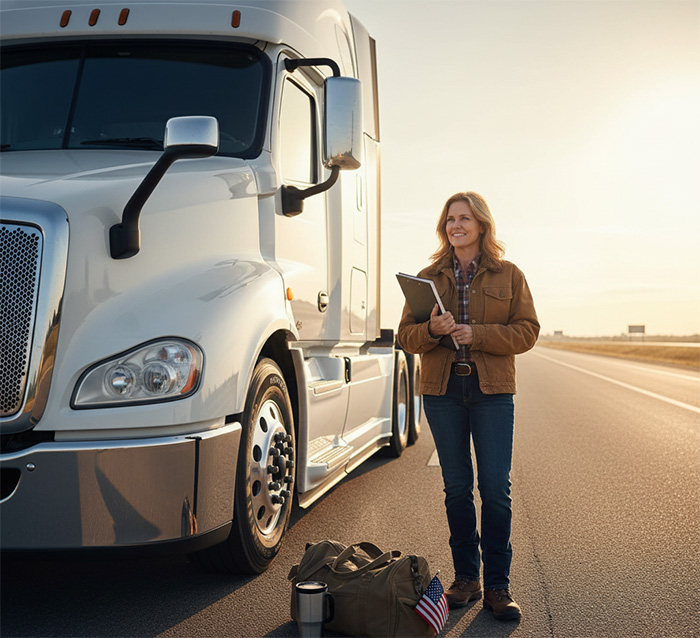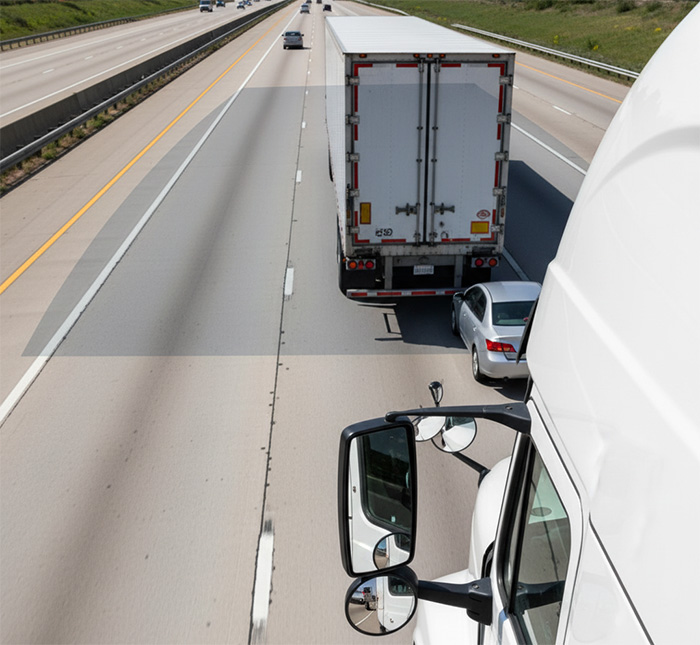
Tractor Trailer Snow and Ice Removal – What You Need to Know
If you’re a truck driver who regularly drives in snowy, frozen conditions, your truck and trailer can be a serious hazard to others on the road. If snow and ice is allowed to build up over days, it can become out right lethal.
In 1999, New Hampshire driver Jessica Smith was killed after a huge piece of ice slid from the top of a trailer and smashed into her vehicle. The state responded by passing a law known as Jessica’s Law in 2002. Simply put, the law states that drivers who don’t remove ice and snow from their vehicles can be cited and fined in the state of New Hampshire. Since then, several other states have passed an enacted snow and ice clearing laws. Aside from hefty fines, when pulled over, drivers are also required to climb on top of their trailers and clear them before being allowed to continue driving.
The following is a current list of states with such laws:
- Pennsylvania
- New Jersey
- Connecticut
- Rhode Island
- Alabama
- Georgia
- Iowa
- Michigan
- Wisconsin
Even in states that don’t currently have laws on the books, drivers can still be cited for ice and snow slides using other state laws, based on negligence and similar state statutes and laws.
For example, the state of Massachusetts has no specific snow and ice laws on the books. However, they found a driver guilty of “transporting an unsecured load” in an ice related incident. Laws like this can be used to fine and punish truckers who fail to clean their rigs, even if no specific laws are on their books to address ice and snow.
So what is the answer? In an already busy job, where time is money and not everyone is nimble enough to jump on the roof and start shoveling…
First, if at all possible, try to park your rig in covered areas during heavy snow storms. Tarps can also be used to reduce snow and ice buildup.
Drivers should also perform a complete inspection prior to their trip to check for snow and ice sheets on their trailers. If you find snow, determine the best way to remove it without putting yourself at risk. If you climb on top of your rig, use fall protection and have a spotter to help you if you run into trouble.
If you drive frequently in icy, snowy areas, try to find facilities that perform semi snow clearing near your routes. Various machines and attachments designed for truck and trailer snow and ice removal are available at truck stops and service centers throughout most of the colder areas.
There is a charge for this service in most cases, but, the cost is minimal when you consider the risk of possible fines, extra vehicle weight, increased fuel consumption, and the potential fur seriously injuring or killing someone.
What specific equipment or tools can truck drivers use to safely remove snow and ice from their trailers if no clearing facility is available nearby?
- Truck drivers can use several tools to remove snow and ice from their trailers safely, including:
- Snow rakes or roof rakes: These long-handled tools allow drivers to remove snow without climbing onto the trailer.
- Heated trailer roofs: Some trucks are equipped with heating systems to prevent ice buildup.
- Air-powered snow blowers: Portable blowers can help remove loose snow quickly.
- De-icing sprays: Chemical de-icers can melt ice and prevent further accumulation.
- Extendable brushes and scrapers: Designed specifically for commercial trucks, these help remove compacted snow.
- Portable snow removal poles with rubber edges: Useful for reaching high areas without damaging the trailer.
Are there any exemptions or special considerations for different types of commercial vehicles under these snow and ice removal laws?
- Exemptions and considerations vary by state, but some common ones include:
- Emergency vehicles: In certain states, emergency service vehicles may be exempt from snow removal laws to ensure quick response times.
- Short-haul trucks: Some states provide leniency for local delivery vehicles that travel short distances.
- Weather conditions: In extreme blizzard conditions, some states may provide temporary relief or extensions to allow safe removal when conditions improve.
- Height restrictions: Some laws take into account the practical challenges of removing snow from taller trailers without proper equipment access.
- Owner-operator distinctions: Some jurisdictions differentiate between large fleet operators and independent drivers when applying fines and enforcement.
What are the penalties or fines for non-compliance with snow and ice removal laws in the states that have enacted them?
Penalties and fines vary by state, but common consequences include:
- Fines ranging from $25 to $1,500 per offense, depending on the severity of the violation and whether an accident occurs as a result.
- License suspension or points added to a commercial driver’s license (CDL).
- Increased liability in accidents, with drivers or trucking companies potentially facing civil lawsuits for damages.
- Company penalties: Some states impose additional fines on trucking companies if they fail to enforce snow removal policies.
- Immediate roadside compliance orders, requiring drivers to remove snow before being allowed to continue their journey.
Disclaimer: The information in this article is based on the data available as of its writing and is meant to inform and guide prospective CDL trainees. For the most current information and specifics about CDL training programs, please contact SAGE Truck Driving Schools directly.
Please fill out the information below and our team will reach out to chat about your options.


